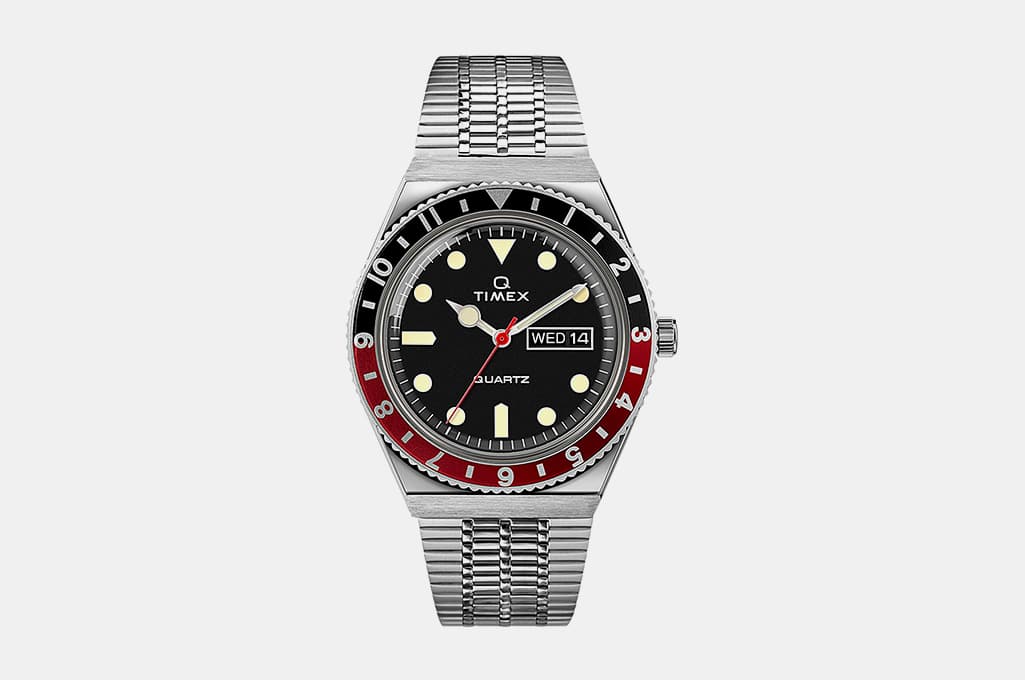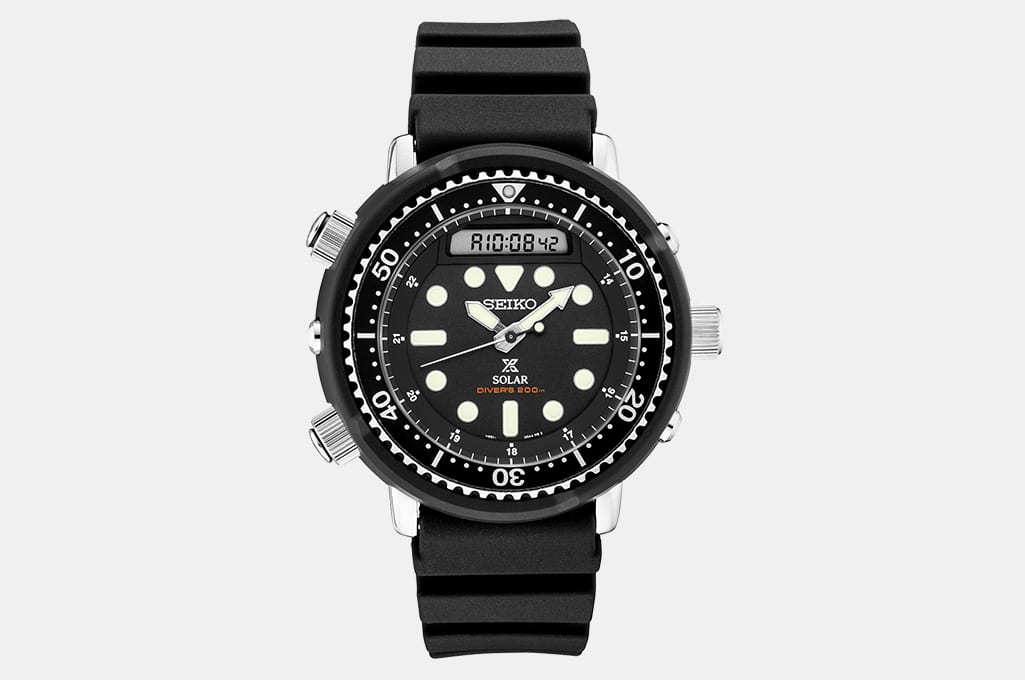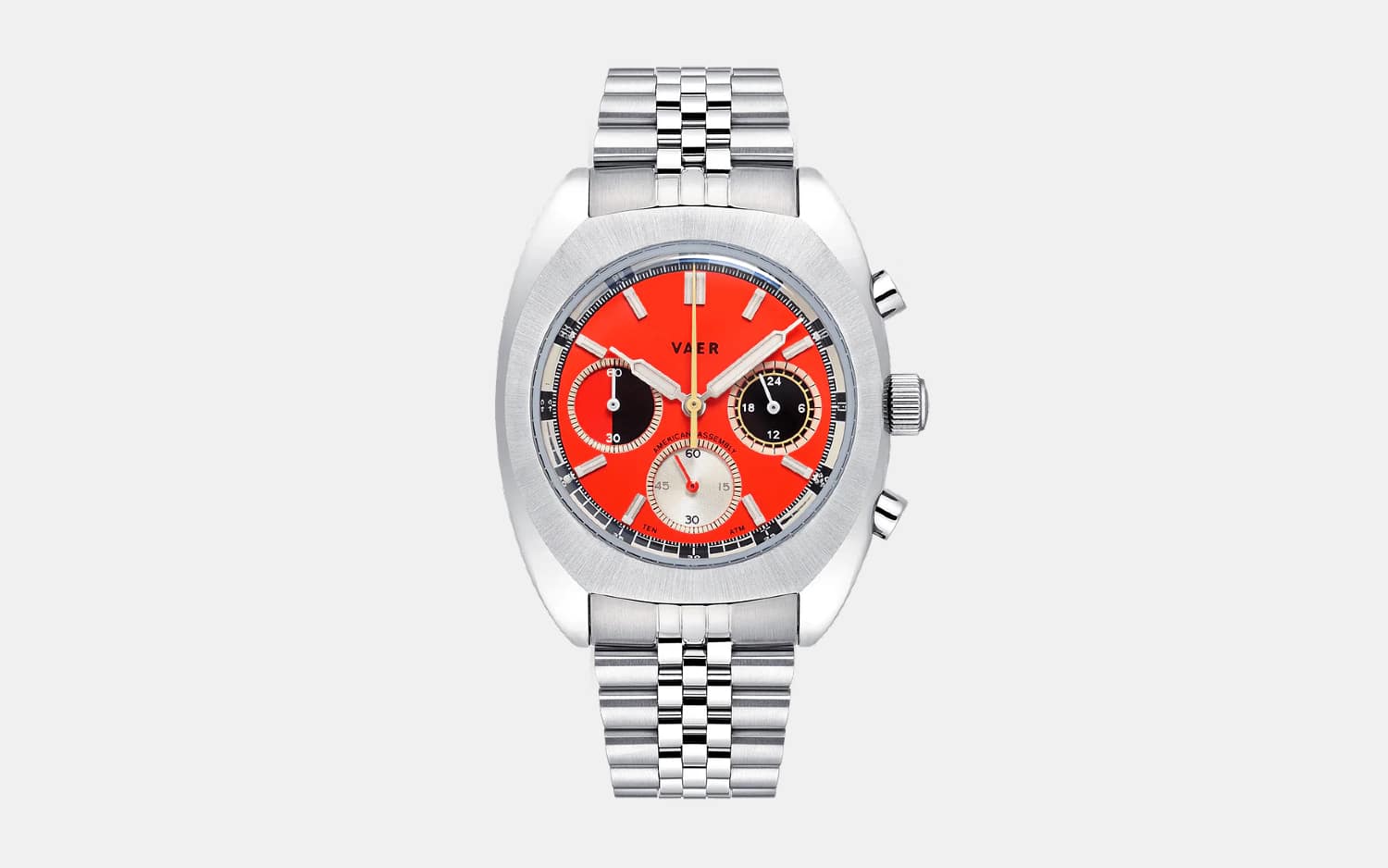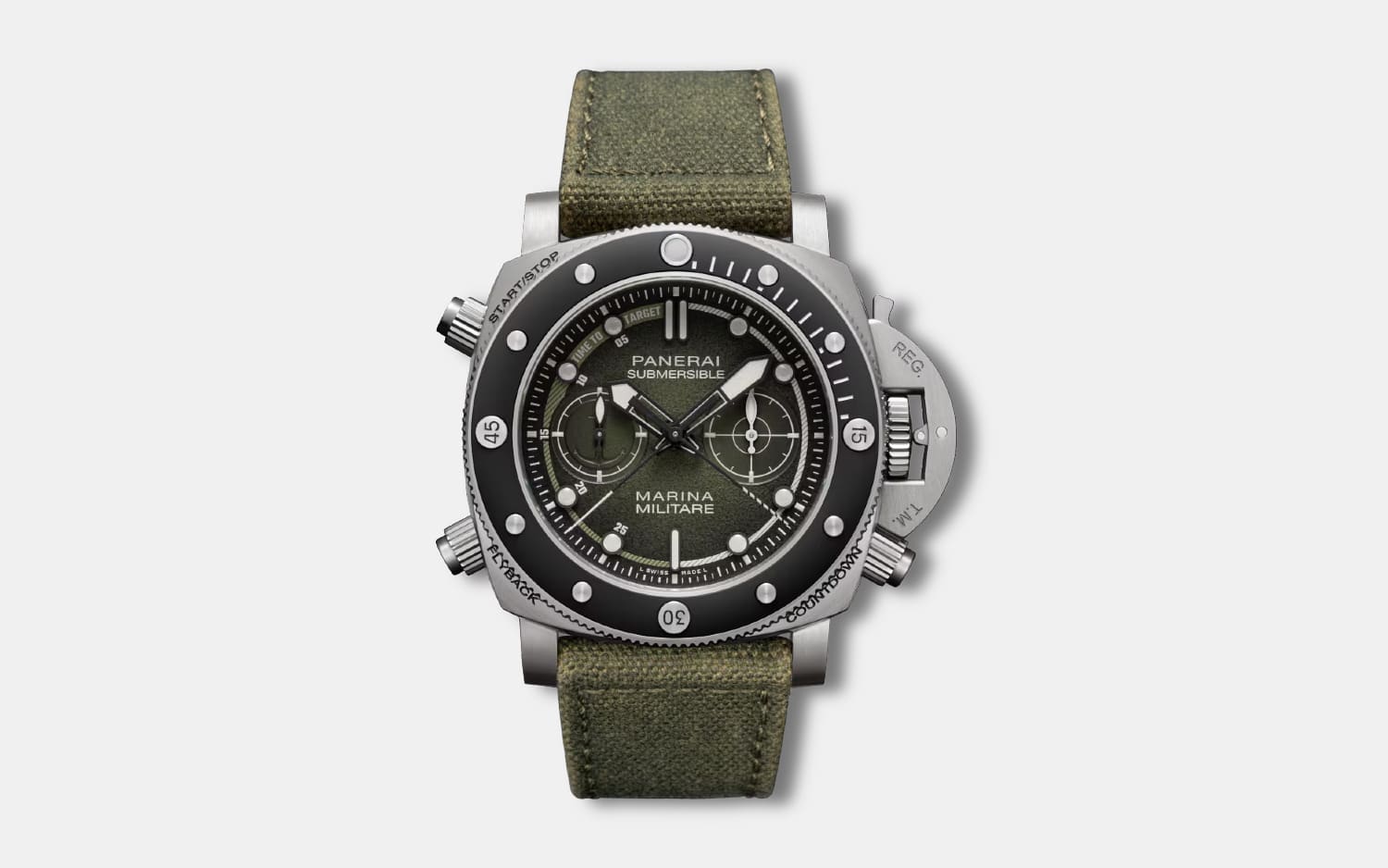Truthfully, two otherwise similar watches can have substantially different price tags based solely on differing crystal materials. Ever been confused by this? Perhaps you want to know why having the phrase “scratch-resistant sapphire crystal” in a model’s product description is such a flex. And if sapphire is so great, why is Seiko, a brand with undeniable horological chops, seemingly so allergic to it?
In this guide to watch crystals, we’re going to break down the three categories: Acrylic, mineral, and sapphire. After all, crystals are meant to protect the watch’s dial, as well as the movement behind it. One might call it one of the most important components of the watch.

Acrylic (Hesalite, Plexiglass)
Not actually a crystal or glass of any sort, acrylic dial protectors are made of plastic. They’re definitely the cheapest option, making them common on popular budget beaters like, say, Timex field watches. Acrylic goes by a lot of different names, mostly coming from brand-specific practices. Hesalite, for example, is what the Swatch Group calls it.
They aren’t scratch-resistant, but they’re impact-resistant, lightweight, and easy to replace. Plus, most shallow scratches can be buffed out with a touch of toothpaste.
The original A-11 field watches from WWII were equipped with acrylic crystals, so there’s a heritage component there. They’re like the NATO straps of dial protectors. This is why, despite their low cost, brands like CWC will often use an acrylic crystal in their era-accurate models.
Since they’re so soft, acrylic protectors can also be molded into basically any shape. When they’re domed, you get that vintage-feeling edge distortion that collectors love.
Here’s the thing though. Stronger, more premium crystals can often be made to simulate a lot of acrylic’s visually desirable qualities. Still, some people choose not to upgrade acrylics on certain models for the same reason some keep the older, non-hacking 7S26 movement in a Seiko SKX007, which again, is the heritage factor.
I’d say that if you want to replace the acrylic on a $500 CWC automatic with a higher-end crystal, go for it. But popping an upscale AR-coated sapphire onto a $40 Timex Weekender is like putting super expensive rims on a beater car.

Mineral
Mineral crystals are the descendants of the original dial protectors, which were made of standard glass. Of course, glass breaks, which is why military watches switched to acrylic.
Often treated with chemicals or heat, mineral watch crystals today are shatterproof while maintaining their characteristic clarity. Technically, they’re more shatterproof than even sapphires—though if you were exposed to the kind of impact that would actually destroy a sapphire, you’d likely have other things to worry about than the state of your watch.
Mineral’s main con is that they can chip. That being the case, they rank below sapphires since a chipped mineral would need replacing as much as a shattered sapphire would, visually.
Basically, mineral is the middle-ground dial protector. It isn’t as expensive as sapphire, it’s stronger than acrylic, and it’s also a pretty low-cost replacement.
If you’ve ever noticed Seiko using mineral crystals at price points most brands would easily opt for a sapphire, it’s because they have a proprietary mineral called Hardlex. Their Seiko 5 Sports GMT Series, which is in the ~$500 range, is a good example. Hardlex possesses an in-house treatment that makes it harder than average minerals on the market.

Sapphire
All of the Swiss hard-hitters, from Rolex to Patek, use sapphire protectors on their watches. Sapphires are strong, compact, and the most naturally scratch-resistant of the trifecta. It’s often treated with an anti-reflective coat, making it just as clear as a mineral. A cool-to-the-touch crystallized ceramic, sapphire is ironically produced in a lab using intense heat.
Ever since Rolex strapped a sapphire onto their Reference 5100 in the ‘70s, it’s been considered a telltale sign of quality. Marketers are so aware of this that some brands use a sapphire-coated mineral crystal just to be able to drop the S-word in their product descriptions. (To be fair, this coating does add more scratch-resistance to a standard mineral, but it’s not to the same level of a real sapphire).
Quick science lesson: Crystal hardness is measured by something called the Mohs scale. Sapphire scores a 9 out 10, beaten only by diamond and moissanite. This means that only these two materials can scratch it, to the point that a lot of suppliers use diamond-coated saws to manufacture their sapphire dial protectors.
Since it’s the highest-end dial protector, you might think that sapphires should be saved for fancy dress watches, but actually, it’s wise to go for these crystals for non-beater everyday timepieces that experience a lot of wear and tear too. Again, this is why the Submariners and Speedmasters of the world are always sapphire-clad.
Disclosure: Clicking on these links and making a purchase may earn us a small referral fee, at no extra cost to you. Learn more here.


